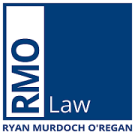As we all know, Artificial Intelligence, more particularly generative AI Chatbots (such as ChatGPT, Microsoft Copilot or Google Gemini) are in existence and now quite commonly used. But are they being used correctly? Many self-represented litigants (and indeed some...
News
Other News
Caveats In Queensland: Protecting Unregistered Interests In Land
Do you have an unregistered interest in land, which needs protection? This article explains how to protect your interest, by way of lodging a caveat.
What Is A Caveat?
A caveat is a legal document which, when recorded on the title of real property, prevents the registration of any dealings which may defeat or diminish the interest claimed in the caveat. The term itself is derived from the Latin word ‘cavete’ meaning ‘beware’. The party who lodges a caveat is known as a ‘caveator’ and the party who has an interest in the land over which the caveat is lodged, is called the ‘caveatee’. The Land Title Act 1994 (Qld) (‘the Act’) primarily governs the creation, use and effect of a caveat.
Effect Of Lodging A Caveat
The primary effect of a caveat is to prevent the legal owner or any third party from:
- transferring or selling the property to another person, or
- registering other instruments against it, such as a mortgage.
According to Mason CJ, Dawson and McHugh JJ in the High Court case of Leros Pty Ltd v. Terara Pty Ltd (1992) 174 CLR 407 at paragraph 422, the purpose of a caveat is to “operate as an injunction to the Registrar-General to prevent registration of dealings forbidden by the Caveat until notice is given to the Caveator, so that he or she has an opportunity to oppose such registration”
Exceptions To The Effect Of Lodging A Caveat
Under section 124 (2) of the Act, the lodgement of a caveat does not prevent registration of the following:
- ‘an instrument specified in the caveat, as one to which the caveat does not apply,
- an instrument, if the caveator consents to its registration,
- an instrument executed by a mortgagee whose interest was registered before lodgement of the caveat, if:
- the mortgagee has power under the mortgage to execute the instrument, and
- the caveator claims an interest in the lot as security for the payment of money or money’s worth,
- an instrument of transfer of mortgage executed by a mortgagee whose interest was registered before lodgement of the caveat; and
- another interest that, if registered, will not affect the interest claimed by the caveator.’
Who Can Lodge A Caveat?
Pursuant to section 122 (1) of the Act, a caveat may be lodged by:
- a person claiming an interest in the land;
- the Registrar at the Land Titles Office;
- the registered owner of the land;
- a person to whom an Australian court has ordered that an interest in the land be transferred; or
- a person who has the benefit of a subsisting order of an Australian Court, restraining a registered proprietor from dealing with the property.
A caveat may also be lodged by:
- a person objecting to an application for adverse possession (section 104 of the Act);
- a person applying to the Supreme Court for an order that another person be made registered proprietor of the land (Section 114 of the Act); and
- a purchaser under an instalment contract (section 74 of the Property Law Act (QLD) 1974).
Caveatable Interest
The party wishing to lodge a caveat, will need to show that they have a ‘caveatable interest’ in the property. The interest claimed will need to be an actual interest in the land. A mere personal or contractual right is not sufficient. Schedule 1 of the Acts Interpretation Act (QLD) 1954 defines “interest in relation to the land or property” as:
- ‘a legal or equitable estate in the land or other property; or
- a right, power or privilege over, or in relation to, the land or other property’.
The following are examples where Courts have found that a caveatable interest exists:
- a buyer’s interest under an unconditional sale contract (Re Oiltool Sales Pty Ltd; Classified Pre-mixed Concrete Pty Ltd [1996] QWN 11);
- an unregistered mortgagee’s interest in land (Re Dixon’s Caveat (1922) 39 WN (NSW) 89); and
- a buyer’s lien for the return of a deposit under a terminated sale contract (Ex parte Lord [1985] Qd R 198).
The following are examples where Courts have held that a caveatable interest does not exist.
- a shareholder’s interest in a company (Apartment Developments Pty Ltd v. Johnson [2013] VSC 136);
- a beneficiary’s interest under a discretionary trust (Walter v. Registrar of Titles [2003] VSCA 122); and
- a partner’s interest in a partnership (Chettle v. Brown [1993] 2 Qd R 604).
These situations do not constitute a caveatable interest, as the interest held does not give rise to a specific right to property owned by the company, trust or partnership.
What Happens After A Caveat Is Lodged?
Once a caveat has been lodged, the registered owner and other interested parties will be notified of the lodgement. The registered owner may serve the caveator with a notice to commence legal proceedings within 14 days of receiving the notice.
If proceedings are not commenced within the requisite time-frame, the registered owner may apply to have the caveat removed. If a notice to commence legal proceedings is not served, the caveat will remain in place for 3 months (section 122(1) (a) of the Act).
Pursuant to section 126 (1) of the Act, a caveat will not lapse after 3 months, if:
- consent of the registered owner was deposited when the caveat was lodged;
- a copy of the court order is deposited when the caveat is lodged;
- lodged by the Registrar;
- lodged other than under section 126; or
- lodged by the registered owner of the property.
According to section 126 (1A) of the Act, a caveat lodged by a registered owner will only lapse after 3 months, if
- there is a mortgage over the property; and
- the caveat is in relation to the actions of the mortgagee.
Removal Of A Caveat
In Landlush Pty Ltd v. Rutherford [2003] 1 Qd R 236 at paragraph 240, Wilson J stated that ‘a current caveat should be removed, unless the caveator shows that there is a serious question to be tried, which would justify leaving the caveat undisturbed’.
A caveat can be removed in the following ways:
- withdrawal of the caveat by the caveator;
- lapsing of the caveat (section 126 of the Act);
- an order by the Supreme Court of Queensland that the caveat be removed (section 127 of the Act); or
- cancellation or rejection of the caveat by the Registrar (section 128 of the Act).
Can A Second Caveat Be Lodged?
Pursuant to section 129 of the Act, a further caveat cannot be lodged by same caveator, on the same or substantially same grounds, without the leave of the court.
Compensation For Lodging An Improper Caveat
The consequences for lodging an improper caveat may be severe. According to section 130 (1) of the Act, ‘a person who lodges a caveat or continues a caveat without reasonable cause, must compensate any person who suffers loss or damage, as a result of this’.
In Queensland, the onus is on the caveator to show that the caveat was lodged or continued with reasonable cause (section 130 (3) of the Act).
In Von Risefer & Ors v. Permanent Trustee Company Pty Ltd & Ors [2004] QSC 248, the plaintiffs lodged four additional caveats over the property, on substantially the same grounds as the three previous caveats which had been removed by a court order. The previous caveats had been removed on the basis that the plaintiffs had no caveatable interest in the property.
Accordingly, Atkinson J was of the view that ‘each of the caveats lodged was lodged without reasonable cause’ and ordered that:
- the caveats be removed, and
- the plaintiffs,
- be restrained by way of an injunction,
- from lodging any further dealings against the property, without obtaining leave of this Court;
- compensate the defendants the sum of $2,170.30, being the defendant’s legal fees for removing the caveats; and
- pay the defendants costs of and incidental to the legal proceeding.
Conclusion
A caveat can be a useful tool to protect a right or claim over property but careful consideration needs to be taken before lodging a caveat.
In order to be successful in lodging a caveat, the:
- caveat must be drafted correctly, in accordance with the Land Titles Office requirements; and
- caveator must have a caveatable interest in the property.
Legal advice should be sought to determine whether a caveatable interest exists. The existence of a caveatable interest will depend on the facts of each individual case.
If the caveat is incorrectly drafted or lodged on improper grounds:
- the caveat will be removed,
- compensation may be incurred, for improper lodgement, and
- the right to lodge another caveat on the same or substantially same basis, will be lost.
Contact Us
Get the best representation. Contact Ryan Murdoch O’Regan Lawyers on 1800 999 529, email mail@rmold.newwebsite.live or submit an enquiry below.
We are available to meet with you at any of our local offices (Brisbane, Gold Coast, Beenleigh, Cleveland and Jimboomba) or by telephone or video-conference.
This article is for your information and interest only. It is not intended to be comprehensive, and it does not constitute and must not be relied on as legal advice. You must seek specific advice tailored to your circumstances.
Get in Touch

